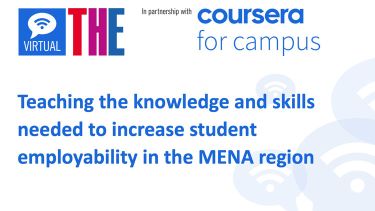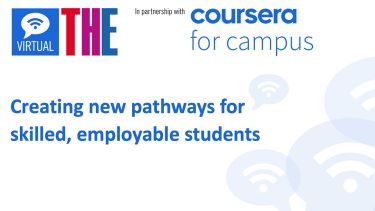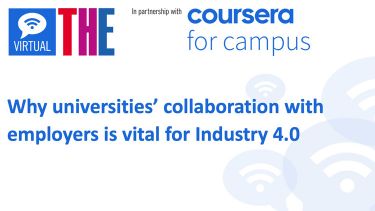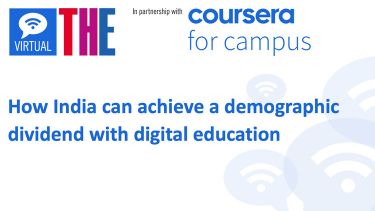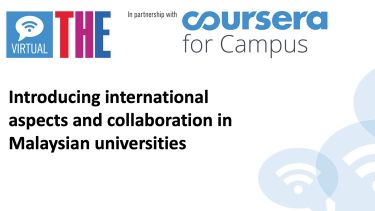With industry prioritising skills when recruiting, how can universities prepare their students for a jobs market that will continue to be disrupted by new technologies?
The pace at which technology is transforming the workplace means universities must adapt curricula accordingly to prepare their graduates. All forecasts warn of disruption ahead; the World Economic Forum predicts that 85 million jobs will be displaced by automation by 2025, with Microsoft estimating another 149 million will be created in digital sectors. This has profound implications for how universities teach their students.
Speaking at the THE Unbounded Universities event, hosted by Times Higher Education in partnership with Coursera for Campus, Raghav Gupta, Coursera’s managing director for India and APAC, described how graduates are facing the “double disruption” of automation and trends towards remote working. In this context of wholesale digitalisation, a trend the Covid-19 pandemic has accelerated, he believes that embedding skills-based learning and innovative approaches to curricula design can close the employability gap.
This is easier said than done. With many emerging technologies being so new, experts are in short supply, meaning there is often a skills gap at a faculty level. “Instructors, or faculty themselves, need to be upskilled and reskilled to be able to teach these skills,” said Gupta. “Traditionally, many institutions have taken time to change and redesign their curricula, and so having a faster ability to be able to change curriculum design is also important.”
But the 21st-century university has a number of digital services to support it through this change. It was crucial that higher education worked closely with industry to establish what skills were required of graduates. With industry adopting a skills-first hiring strategy, higher education can benefit from closer industry relationships. Academic partnerships with industry can support skills training with professionally recognised credentials, but Gupta cautioned that such models should broaden a graduate’s career horizons rather than limiting their prospects with company-specific programmes.
Integrating online courses from Coursera would allow universities to make use of other institutions’ expertise and augment their curricula with courses from third-party institutions. “A business student might want to go work in fintech and he or she needs to learn blockchain, and the university may or may not have faculty for blockchain,” said Gupta. “The university may say: ‘I’ll take material from a Coursera course and make that available to the student.’”
Smaller institutions might lack the recruiting power to attract the best minds in machine learning, but using a platform such as Coursera could allow it to supplement its programme with classes taught at Stanford or the Massachusetts Institute of Technology. The popularity of subjects such as artificial neural networks, digital marketing, blockchain, python programming and JavaScript highlighted the growing influence of emerging technologies. “A lot of jobs that we see coming up are around the digital space, around new technologies and data science,” Gupta said. “That is what a lot of students who are coming to the Coursera platform are taking.”
There might not be one curriculum to teach students all the skills they will need in their career, but an imaginative, industry-informed approach to curricula design can greatly enhance the 21st-century graduate’s employability.
Watch the session on demand above or on the THE Connect YouTube channel.
Find out more about Coursera for Campus.
















